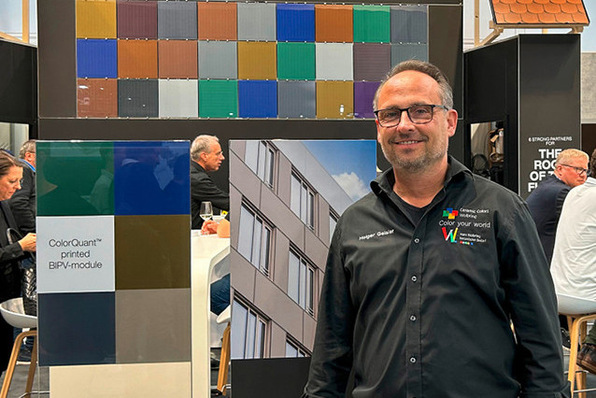The delivery of windows, construction elements and glass requires vehicles with high payloads and large loading volumes. Especially in the field of light commercial vehicles, an initial trend towards electric mobility can now be seen. More and more models such as the Renault Kangoo E-Tech are coming onto the market with alternative drive systems. Government subsidies and the improved battery capacities for electric vans now represent an interesting alternative for trade and commerce.
For more than 40 years, Hegla Fahrzeugbau has been offering optimised solutions for transporting glass and building components. "As the market leader, we want to help maximise the vehicle's usefulness and ensure that the range is not compromised by our body," says Sales and Development Manager Marc-Alexander Stachel from Hegla Fahrzeugbau.
[TGT Teupen: Strong crane for the construction site]
The result was the development of an external reefing system especially for electric vehicles, which is around 20 per cent lighter than before when empty and can be dismantled in just a few steps to save even more energy in everyday use. These features combined with an aluminium construction result in a low dead weight of the reef.
Proven Hegla reefing in aluminium
Even with the electric drive, the external reef continues to be part of the standard equipment of a vehicle that is to be used for delivery and for the installation of glass, construction elements and other oversized items.
The payload is largely maintained by using the weight-optimised aluminium external reefing. "In addition, the protective alloyed aluminium offers the advantage that it cannot rust. The special torsion-resistant Hegla profiles give the reefing the usual stability and load-bearing capacity," explains Marc-Alexander Stachel.
Three answers on e-mobility
Mr Stachel, the total weight of a van plays an important role with regard to range and payload. What equipment do you recommend to your customers?

Hegla / Peer Hahn
Marc-Alexander Stachel - When selecting the vehicle equipment, we work closely with the manufacturers and car dealers. Not every additional equipment is suitable for conversion to an industry vehicle. This depends less on the range and the payload, here you have to pay particular attention to assistance systems that can lead to impairments in driving operation, in combination with the body.
[A MAN van with caterpillar drive for operating in tough terrain]
E-mobility has expanded the spectrum of drives. How do you rate natural gas and hydrogen? Have you already had conversions?
Stachel - Natural gas has been around for a while, so we have already implemented superstructures for such vehicles. Hydrogen drives are currently still in the test phase for small commercial vehicles and are only available to a very limited extent. There is still a lack of a nationwide filling station infrastructure. As the market leader, it is our goal to react quickly to changes and always offer our customers a solution, no matter how the vehicle is powered.
Do you see industries where e-mobility is meeting with higher demand?
Stachel - No, the enquiries come from all sectors of our clientele. In our case, the enquiries are even more restrained compared to abroad, where we are currently receiving more orders for electric transporters. It remains to be seen how the vehicle manufacturers and politicians position themselves in the future in the area of alternative drives for commercial vehicles.













